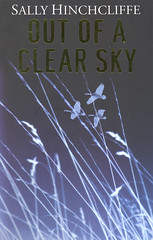At school I was a member of a swotty group of adolescents who fancied themselves to be “writers in the making”. We filled our diaries with angst-drenched poetry and feeble short stories and hoped we were honing a genius that would only be recognised once we’d left school behind and made our way to university and to freedom.
We were encouraged by our English teachers, I now suspect, for their amusement. One afternoon, handing back another pile of arch mediocrity, Mr Gurney told us about a piece of creative writing that had been produced by one of his 15 year old students. It was, unpromisingly, about a man alone at sea on a raft. It was easy enough, Mr Gurney told us, to outrage a readership and scarcely harder to amuse them, but reading the boy’s story he had felt frightened. To have enough talent to grip a reader’s imagination in that way was a precious and formidable thing. I don’t know what my fellow junior pseuds felt, but I realised the game was up for me. I couldn’t see how it could be done.
“Out of a Clear Sky” scared me.
Birds and birdwatching provide the book’s thematic unity, doing a triple duty. First, and most prosaically, it provides the framework for the plot itself. The events play out in early morning mists, on remote coastlines, in campsites, bothies and hides all vividly evoked. The obsession that characterises the twitchers, compelling them to pursue the birds that fascinate them, slips, in this story, into obsessive love and a pursuit of different and darker kind. Observations of bird behaviour resonate in the actions of the human characters, working as a sort of psychological shorthand – a dazzling metaphorical trick that, handled with anything less than Sally Hinchliffe‘s deftness, might have clunked and annoyed. Finally, the birds are a source of simile. That again is brave. An accumulation of avian similes could easily have proved tiresome – too much salt in the dish – but it is done with such subtlety that instead it delights.
The book is supposedly a thriller, which is not a genre I have much experience of – more fool me. It is also Sally’s debut novel and for a first book it astonishingly assured: It is meticulously plotted and gathers pace like an 800 metre runner.
However, its real strengths lie elsewhere. The novel deals with three kinds of death. The first is the sudden and violent extinction of a human life. On the first page, the protagonist, Manda Brooks, is contemplating the dead body of David, the man who has stalked her. It is that death that determines the bookshop shelf upon which the novel will sit but it certainly does not define the book itself.
The first part of the book deals with the death of Manda’s relationship with the feckless Gareth. A discovered infidelity arrives like a diagnosis of a cancer; their attachment dying suddenly having ailed invisibly until past the point where any cure can be contemplated. She deals so well with the involuntary bitterness and the mess of anger, shame and loss that grief for a lost love leaves behind that I found myself resenting the insistence of the plot which I knew would draw my eye away.
The third death is that of her family. Like a death from old age, it is characterised by a steady decline, a loss of faculty and the gathering realisation that things no longer work as they should and that matters can only get worse. Again, this is handled with a steady eye and conviction that itself convinces.
Given that the book is about people given to patient and minute observation, it is hardly surprising that Sally writes so well about them. She is the author of an immensely popular blog. All the best bloggers are miniaturists. More than once a description of a place, an interaction or an event is painted with such care that it catches the breath. Descriptions of Manda’s childhood in Africa and her realisation that she will find no friends in boarding school stand out. However, a better example still is a short passage describing Manda and her sister Zannah trimming an artificial Christmas tree. Like a Holbein painting you cannot imagine it is not drawn from life. If it is the product of imagination alone then that is a still more formidably impressive a feat.
